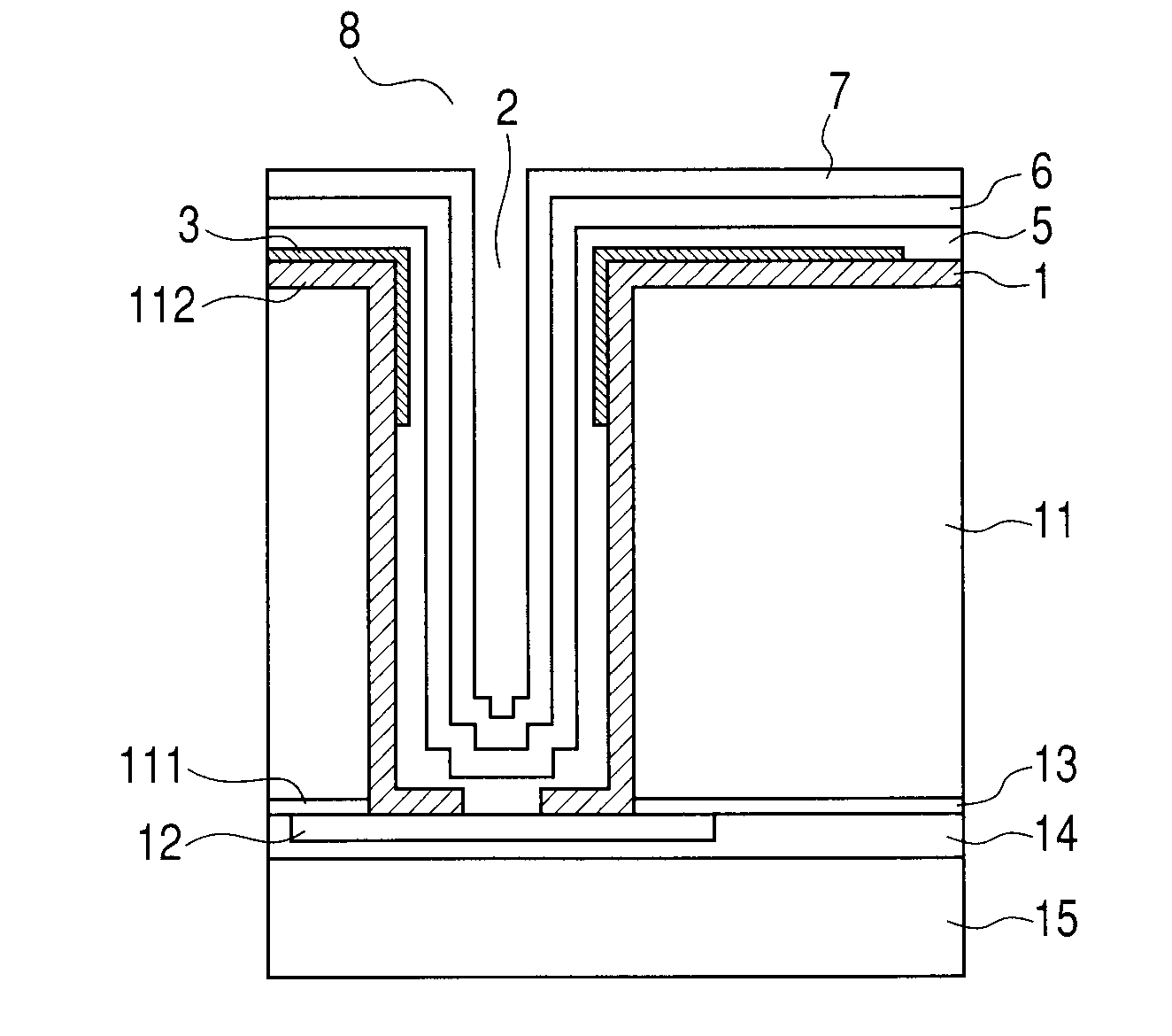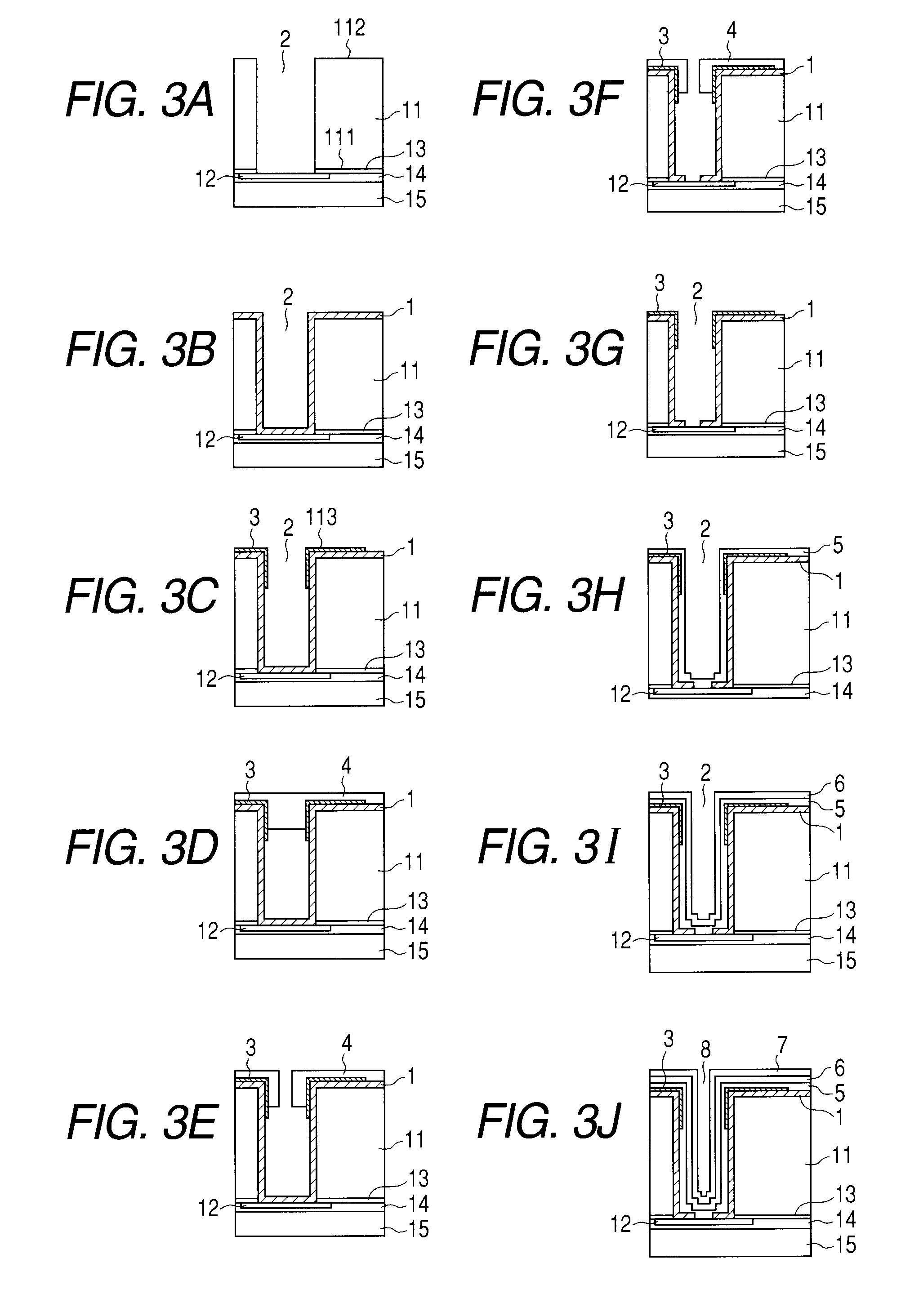Semiconductor apparatus manufacturing method and semiconductor apparatus
a manufacturing method and semiconductor technology, applied in the direction of semiconductor devices, semiconductor/solid-state device details, electrical devices, etc., can solve the problems of affecting the quality of semiconductor devices, and end up being very thin or completely etched away, etc., to achieve high yield and highly reliable penetration of electrodes
- Summary
- Abstract
- Description
- Claims
- Application Information
AI Technical Summary
Benefits of technology
Problems solved by technology
Method used
Image
Examples
embodiment 1
[0051]FIG. 1 is a diagram illustrating a semiconductor apparatus in section according to an embodiment of the present invention. The semiconductor apparatus of the present invention includes the penetrating electrode 8. The electrode pad 12 is formed on the front surface 111 of the semiconductor substrate 11 (or on a surface of the interlayer insulating film 13 in the case where the semiconductor substrate 11 includes the interlayer insulating film 13 formed thereon). The thickness of the semiconductor substrate 11 is 200 μm, for example. The interlayer insulating film 13 is formed by the lamination of SiO2 and SiN in the semiconductor process, for example. Further, components including a semiconductor device (not shown) and wiring (not shown) are connected to the electrode pad 12. The electrode pad 12 has a thickness of, for example, 2.1 μm and the wiring has a thickness of, for example, 0.6 μm. The through-hole 2 with a diameter of, for example, 50 μm is formed in the semiconducto...
embodiment 2
[0053]Embodiment 2 of the present invention is described next. In Embodiment 2, the adhesion securing layer 3 is formed from an inorganic insulating film.
[0054]As illustrated in FIG. 4, sputtering or ECR is used to form an inorganic insulating film as the adhesion securing layer 3 along the opening portion edges of the through-hole 2 and on the entire rear surface of the semiconductor substrate 11. The adhesion securing layer 3 is formed from an inorganic insulator such as SiO2 or SiN. After the adhesion securing layer is formed, the same steps as in Embodiment 1 are executed.
[0055]In a step illustrated in FIG. 5, unnecessary portions of the barrier layer 5 and the seed layer 6 are etched away by tint etching with the use of a dry film.
[0056]The adhesion securing layer 3 which is an inorganic insulating film may be left intact in this step instead of being etched.
[0057]Lastly, a normal dicer is used to cut pieces of the semiconductor apparatus out of a wafer by dicing as in Embodime...
PUM
| Property | Measurement | Unit |
|---|---|---|
| thickness | aaaaa | aaaaa |
| thickness | aaaaa | aaaaa |
| thickness | aaaaa | aaaaa |
Abstract
Description
Claims
Application Information
 Login to View More
Login to View More - R&D
- Intellectual Property
- Life Sciences
- Materials
- Tech Scout
- Unparalleled Data Quality
- Higher Quality Content
- 60% Fewer Hallucinations
Browse by: Latest US Patents, China's latest patents, Technical Efficacy Thesaurus, Application Domain, Technology Topic, Popular Technical Reports.
© 2025 PatSnap. All rights reserved.Legal|Privacy policy|Modern Slavery Act Transparency Statement|Sitemap|About US| Contact US: help@patsnap.com



